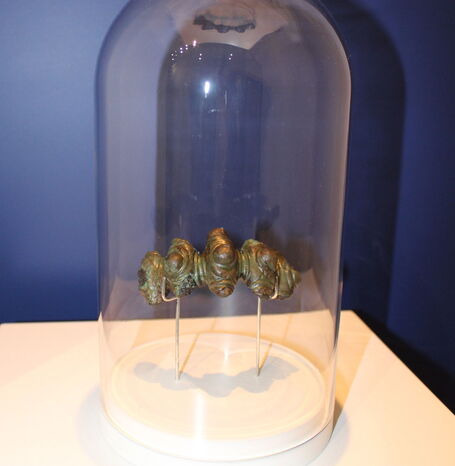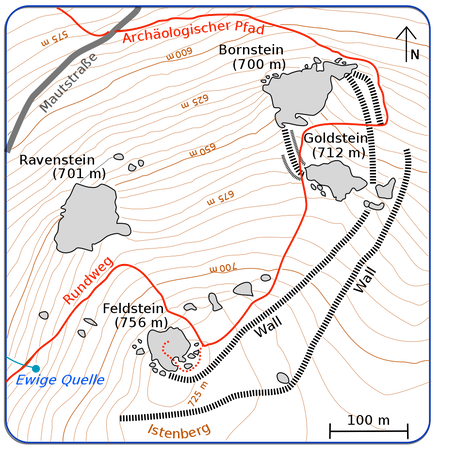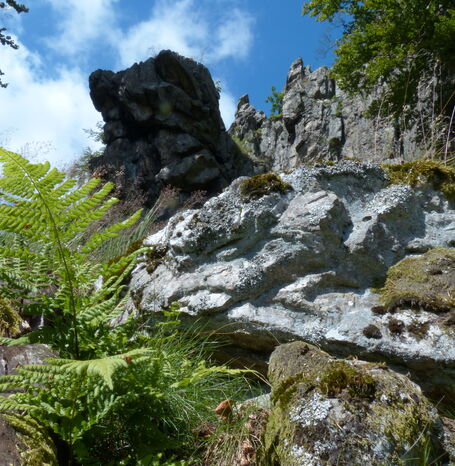They consist of quartz porphyry, a particularly hard volcanic rock that was gradually shaped from its softer shell of Devonian clay shales by erosion processes over millions of years. Today, the mighty rocks are an imposing testimony to the submarine volcanic activity in the prehistoric times of the Sauerland region. But the Bruchhauser rocks are not only geologically a worthwhile excursion destination. As a retreat area of arctic-alpine plants they belong to the rare locations of plants (so-called "relict species") from the ice age that are no longer native to us. Only here - under extreme climatic conditions - they could survive until today and were not displaced by warm-age plants.
The Bruchhauser rocks are not only impressive because of their natural features. Archaeological relics date back to the Iron Age some 2,500 years ago. During this time, people built a huge fortress with an eastern orientation in front of the Bruchhauser Stones. The remains of this fortress are recognizable today in the form of a double rampart in the terrain and represent the oldest rampart complex in the Sauerland. Further research in the surrounding area shows that the fort was probably built within a settlement landscape of small individual farmsteads and served as protection against enemies. In addition to the protective function, there are now growing indications that the Bruchhauser Steine may also have served as a so-called cult site. A further, so far unsolved question is the assignment of the settlement to an ethnic group. Numerous finds indicate that the people had connections to southwestern Celtic tribes. This theory was corroborated by the discovery of a Celtic bracelet a few years ago. Visitors can admire a replica of this magnificent bracelet in the Info Center.
The Bruchhaus Stones are designated as a "National Geotope" and since April 19, 2017 as a "National Natural Monument"!
National Geotope

Since 2006, the Bruchhauser Steine have also been designated as a National Geotope. In a first call from the Academy for Geosciences and Geotechnology, 77 geotopes were designated and recorded as National Geotopes. Among them are the Bruchhauser Steine, which are thus on a par with the Externsteine in the Teutoburg Forest and the North German Wadden Sea.
The info center at the Bruchhauser Stones has a new exhibition about geology, archeology and flora and fauna! Anyone visiting the Bruchhauser Stones should take a look here as well...





